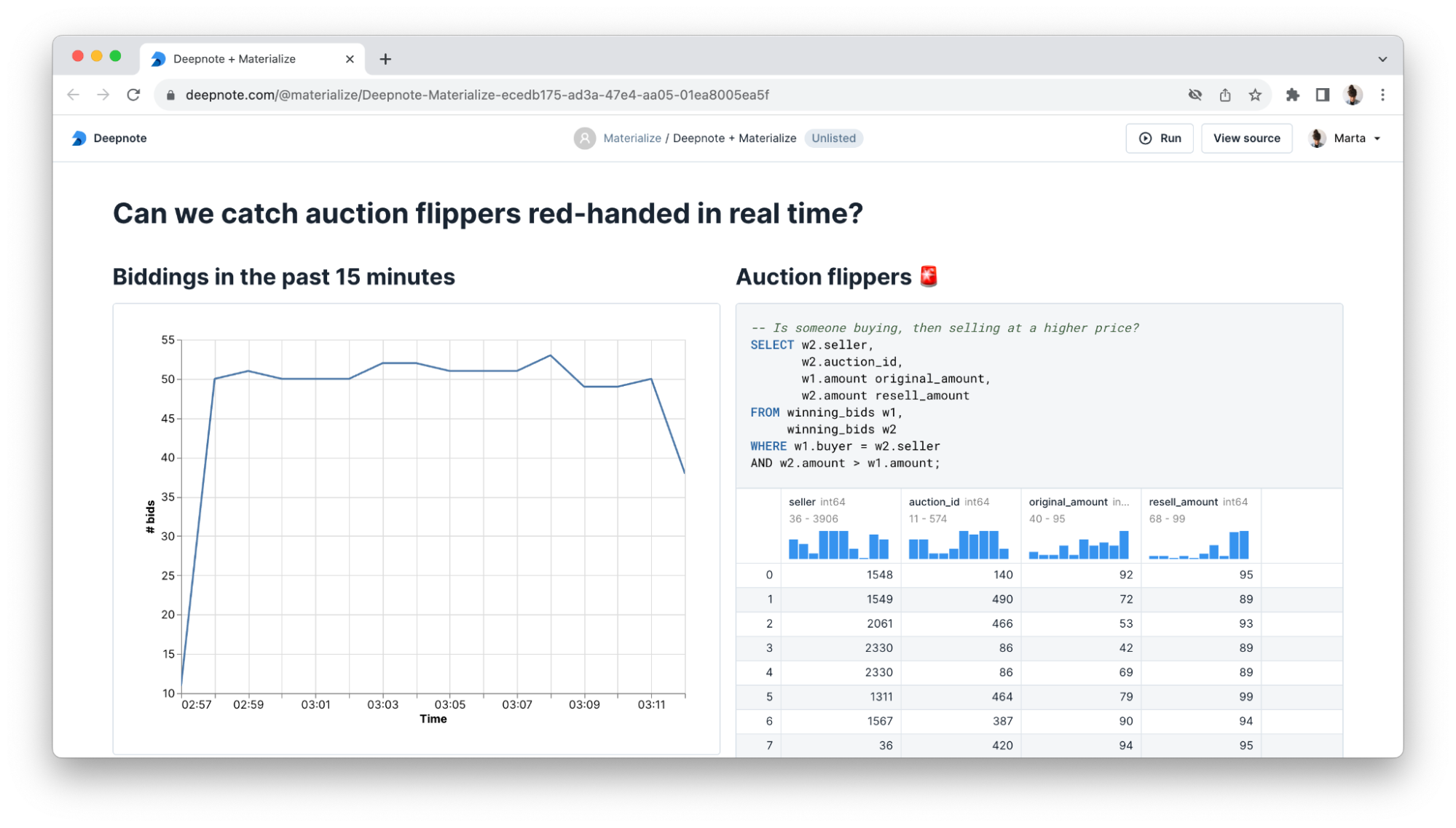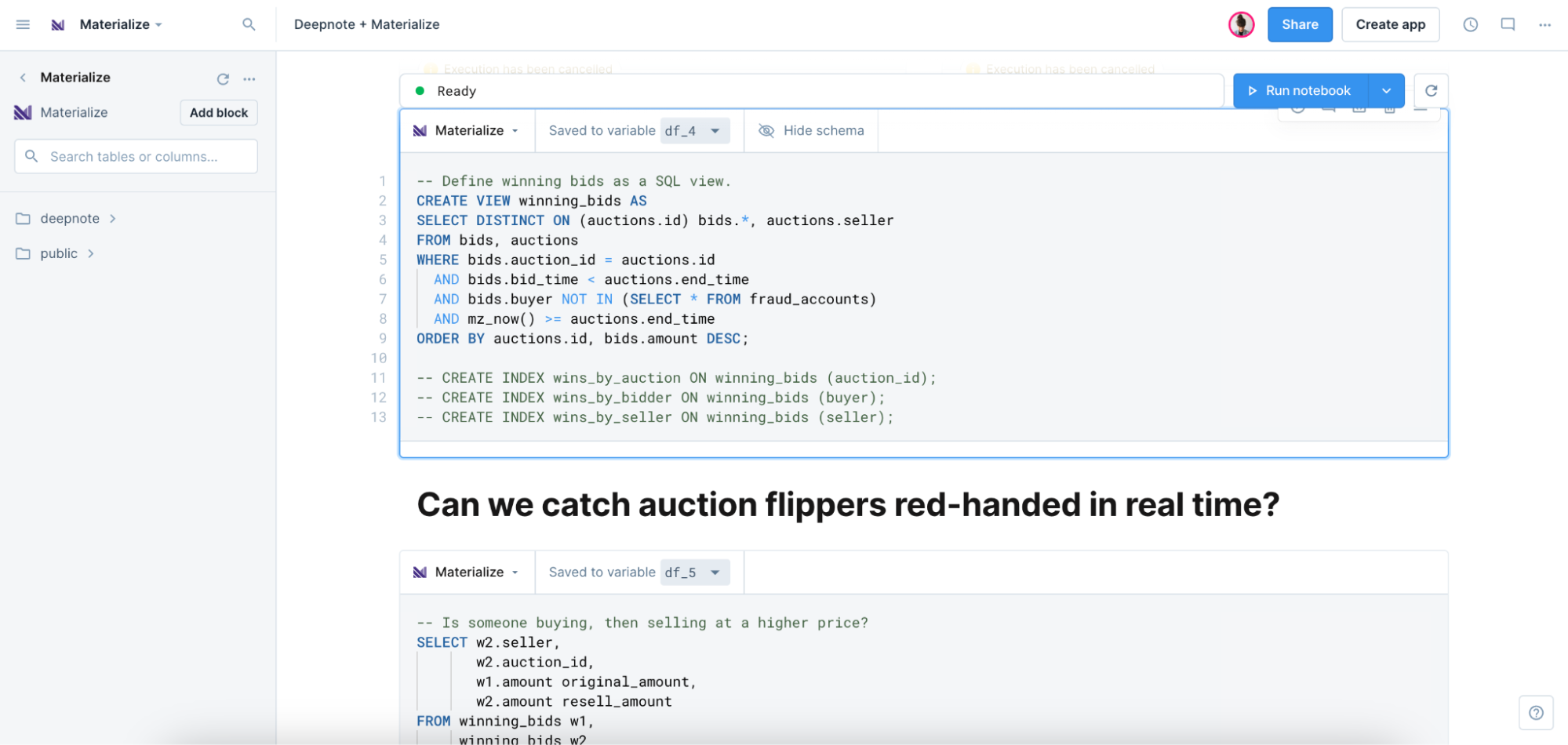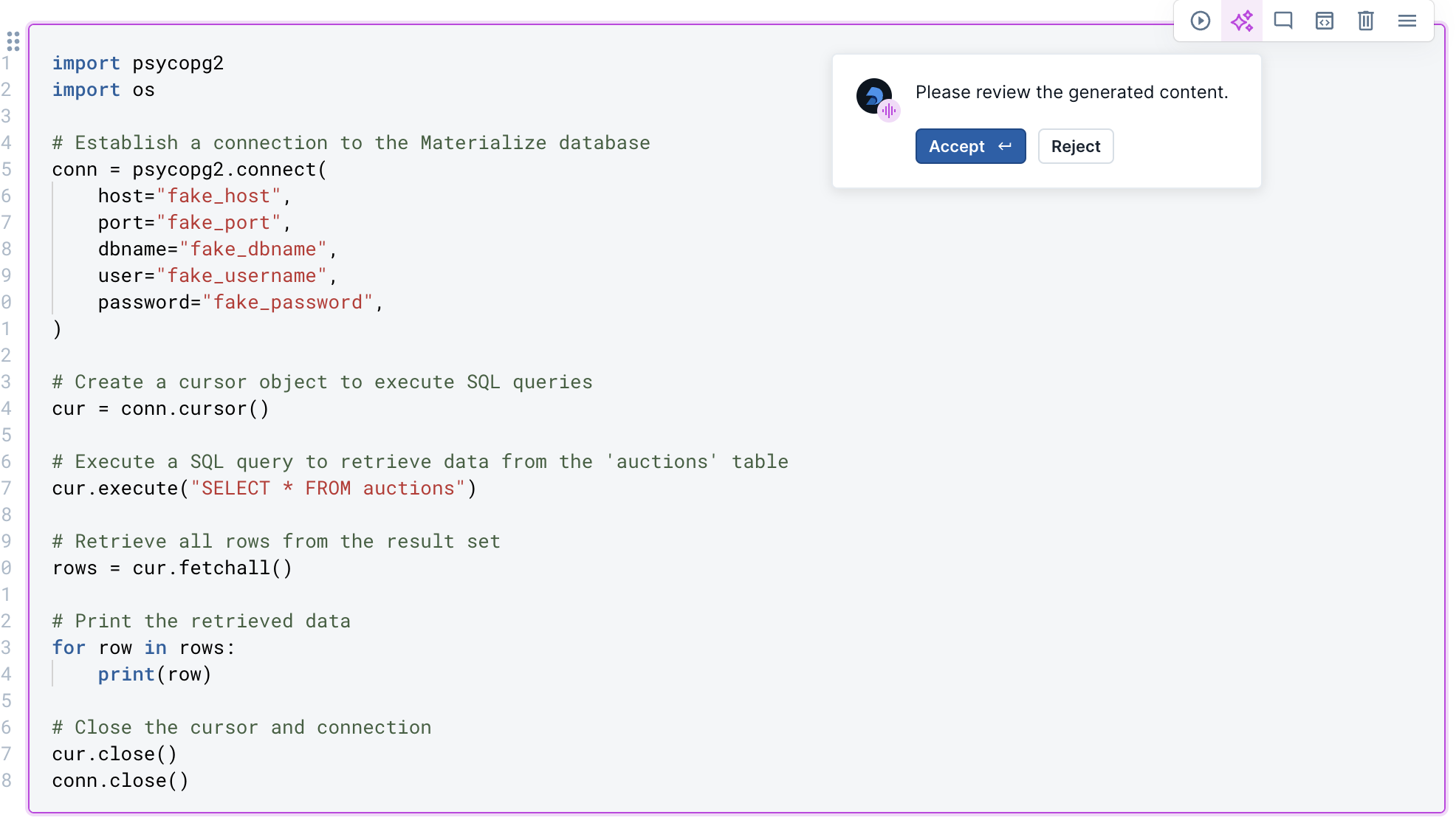We're excited to announce our integration with Materialize. Learn about the opportunities this collaboration opens for your development workflow.
Materialize is a new kind of data warehouse built for operational workloads: the instant your data changes, Materialize reacts. But what good is having data that is always up-to-date, consistent, and immediately accessible if your team can’t move equally as fast?
With this new integration, you can supercharge your Materialize development workflow with Deepnote’s collaborative notebook experience.
Combine data freshness with fast prototyping
Materialize shines for operational use cases where an analytical data warehouse would be too slow, and a stream processor would be too complicated. Using SQL and your bare hands, Materialize allows you to build real-time automation, engaging customer experiences, and interactive data products that drive value for your business while reducing the cost of data freshness.
Your bare hands can only take you so far, though, and this is where Deepnote can help! Think SQL editor, but with a feature set focused on making the development lifecycle faster, easier, and more collaborative.
With Deepnote, you can explore data with SQL and Python, create presentation-ready data visualizations with zero code, and provide key context with rich text formatting, all in one place. Your team can collaborate live in the same development environment, leave comments for async coordination, and share notebooks organization-wide by simply sharing a link.

You can connect to Materialize using Deepnote’s SQL blocks, or Python. Your version-controlled notebook can then be published as an article, dashboard, or interactive application. From there, you can organize it into a searchable workspace that is protected by role-based access control. This makes it much easier to quickly share your work and iterate on it with both technical and non-technical stakeholders.
Deepnote also features a blazing-fast schema browser that you can use to explore your Materialize data model. Not only do you get full visibility into every table and column, but you can also speed up your SQL workflows with smart autocomplete — all without ever leaving your notebook.
Integrate in three steps
Step 1. Create a new Materialize integration
From the integrations tab in the right-hand panel of your Deepnote notebook, click Create new, select Materialize, and fill in your credentials.

Step 2. Use the integration in a project
Use your new Materialize integration in any project within your workspace using the right-hand sidebar. Just click the plus sign (+) and choose the integration you created.

Step 3. Take a test-drive!
Create a SQL block in your notebook and run through the Materialize quickstart.

You’ll notice that queries return within milliseconds. This is the ✨magic ✨ of Materialize: instead of recalculating results from scratch, or serving stale cached results, it continually ingests data and keeps results up-to-date as new data arrives.
Step 4: Python with Deepnote AI 🔮
You can sit back and use Deepnote AI to generate your Python connection code.


Now we’ve experienced multiple ways to connect Materialize and Deepnote, feel free to use whichever suits your needs.
Try Deepnote & Materialize today!
We’re thrilled to partner with Materialize to bring Deepnote’s secure, scalable, and collaborative notebook experience to the edge of operational data warehousing. Get started for free by signing up for Deepnote and Materialize accounts. Need help? Check out the documentation, or ping us in the Deepnote community.